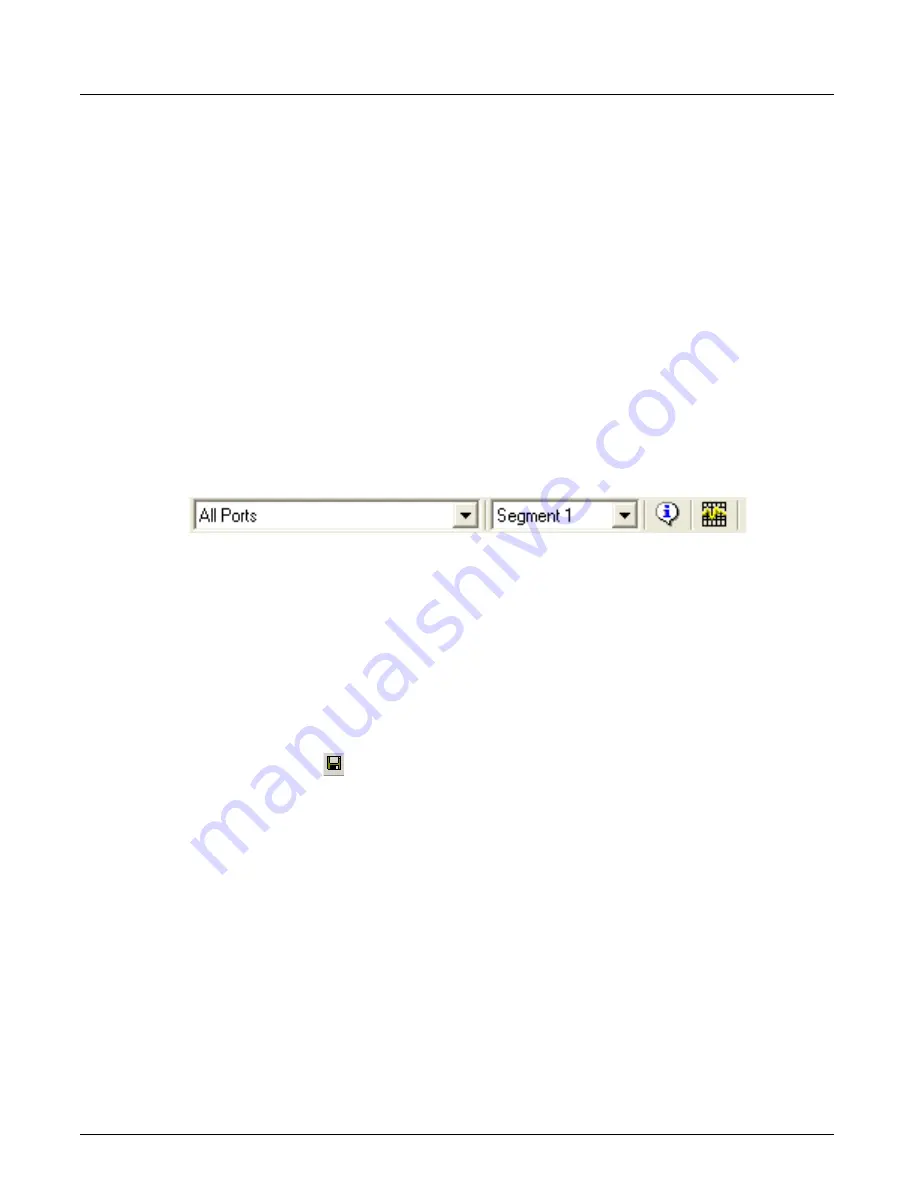
Working With Domains
Chapter 12, Getting Started with Xgig TraceView
Xgig Analyzer User’s Guide
223
Xgig Port Selection by Chassis or Blade
Ports are shown within blades, and blades are shown within chassis within the
Select Ports/
Domain to Analyze
dialog box. As a shortcut, you can select a chassis and add all its ports to the
selection by clicking on the
Viavi Xgig
logo above the chassis name. You can also click the blade
area surrounding ports to add all the ports in the blade to the selection.
Segment Selection
When viewing a trace from the hardware buffer, the buffer may be segmented. The initial segment
to view is selected in the
Select Ports/Domain to Analyze
dialog box. However, you can change
the segment you are viewing without returning to this dialog box.
If the domain you have selected contains capture buffers that have been segmented, choose the
segment to view from the
Segment:
drop-down box in the TraceView toolbar. The drop-down box
only contains segments that contain valid capture data for viewing. Each segment is completely
independent when viewed in TraceView; each segment has its own bookmarks and triggers.
Note that viewing a segment in TraceView when a capture is in progress for another segment
within the domain is not allowed. You also cannot view multiple segments within the same domain
from the same instance of TraceView.
Saving a Trace
You can save your trace or a portion of the trace to a file for detailed analysis.
Select the
Save As
button or select
Save Trace…
from the
File
menu.
When the
Save As
dialog box opens, navigate to the location that you would like to save the files.
Then enter the file name in the
File name:
text box.
Summary of Contents for Xgig
Page 1: ...Xgig Analyzer Version 7 3 User s Guide ...
Page 2: ......
Page 3: ...Viavi Solutions 1 844 GO VIAVI www viavisolutions com Xgig Analyzer Version 7 3 User s Guide ...
Page 6: ...Xgig Analyzer User s Guide Page iv Version 7 3 December 2015 ...
Page 7: ...v CONTENTS ...
Page 15: ...1 PART ONE Using Xgig Analyzer ...
Page 16: ...PART ONE Using Xgig Analyzer 2 Xgig Analyzer User s Guide ...
Page 27: ...13 PART TWO Using Xgig TraceControl ...
Page 28: ...PART TWO Using Xgig TraceControl 14 Xgig Analyzer User s Guide ...
Page 29: ...15 Chapter 2 About Xgig TraceControl In this chapter Introduction to TraceControl ...
Page 176: ...Chapter 6 Xgig TraceControl Hints and Tips Keyboard Shortcuts 162 Xgig Analyzer User s Guide ...
Page 177: ...163 PART THREE Using Xgig Performance Monitor ...
Page 178: ...PART THREE Using Xgig Performance Monitor 164 Xgig Analyzer User s Guide ...
Page 223: ...209 PART FOUR Using Xgig TraceView ...
Page 224: ...PART FOUR Using Xgig TraceView 210 Xgig Analyzer User s Guide ...
Page 225: ...211 Chapter 11 About Xgig TraceView In this chapter Introducing Xgig TraceView ...
Page 382: ...Chapter 15 Xgig TraceView Histograms Histogram Controls 368 Xgig Analyzer User s Guide ...
Page 383: ...369 Chapter 16 Xgig TraceView Template Editor In this chapter Using Template Editor ...
Page 437: ...423 PART FIVE Using Xgig Expert ...
Page 438: ...PART FIVE Using Xgig Expert 424 Xgig Analyzer User s Guide ...
Page 442: ...Chapter 21 Xgig Expert 428 Xgig Analyzer User s Guide Figure 194 Xgig Expert Graph View ...
Page 443: ...429 PART SIX Appendices ...
Page 444: ...PART SIX Appendices 430 Xgig Analyzer User s Guide ...
Page 454: ...Appendix C Protocol Display Color Coding 440 Xgig Analyzer User s Guide ...
Page 461: ...447 INDEX ...
Page 467: ......






























